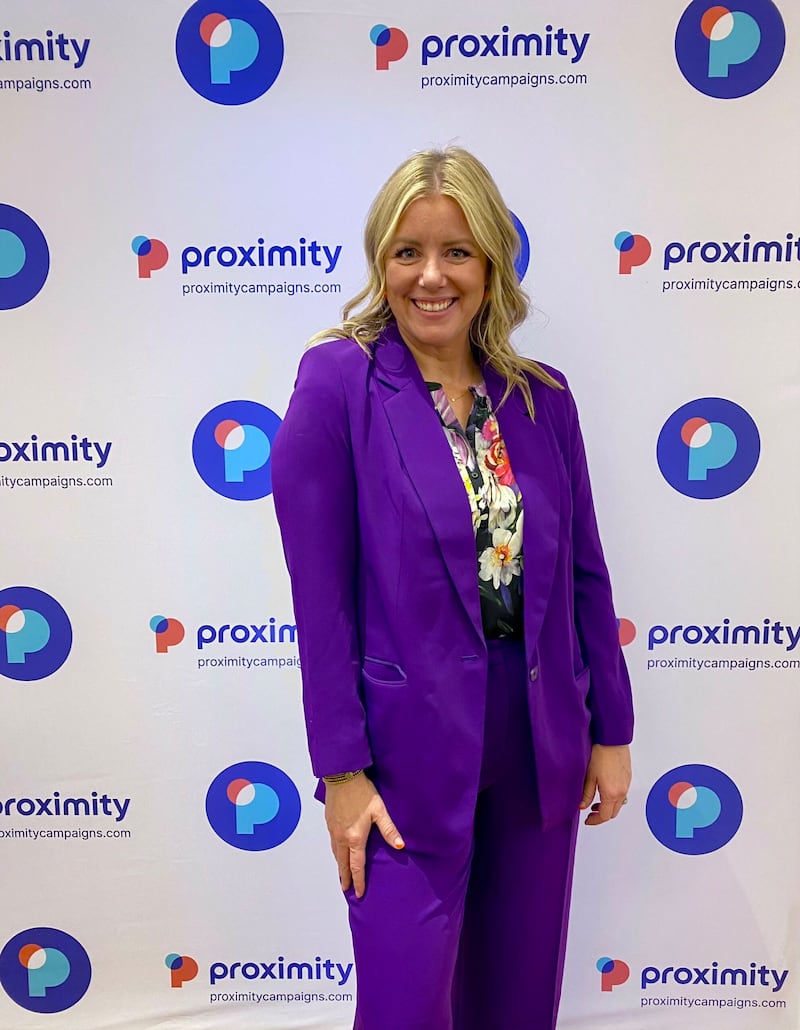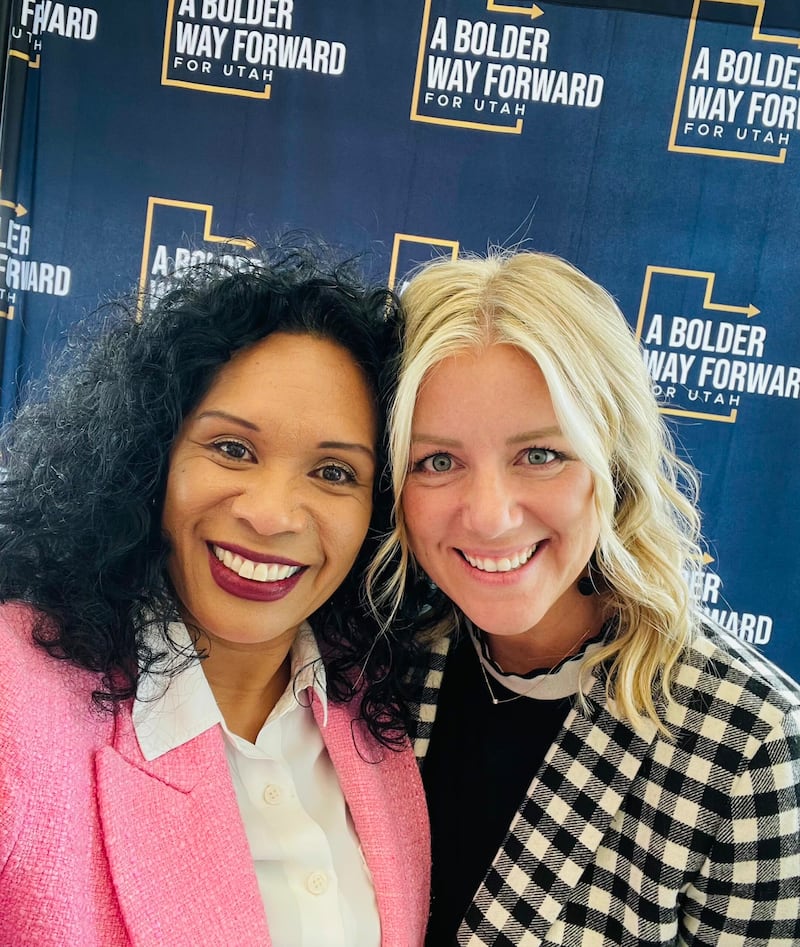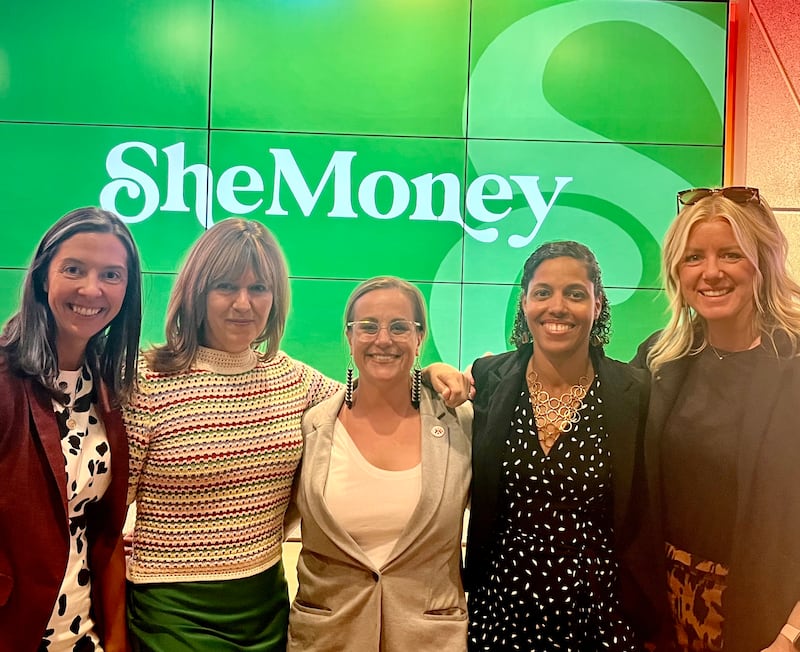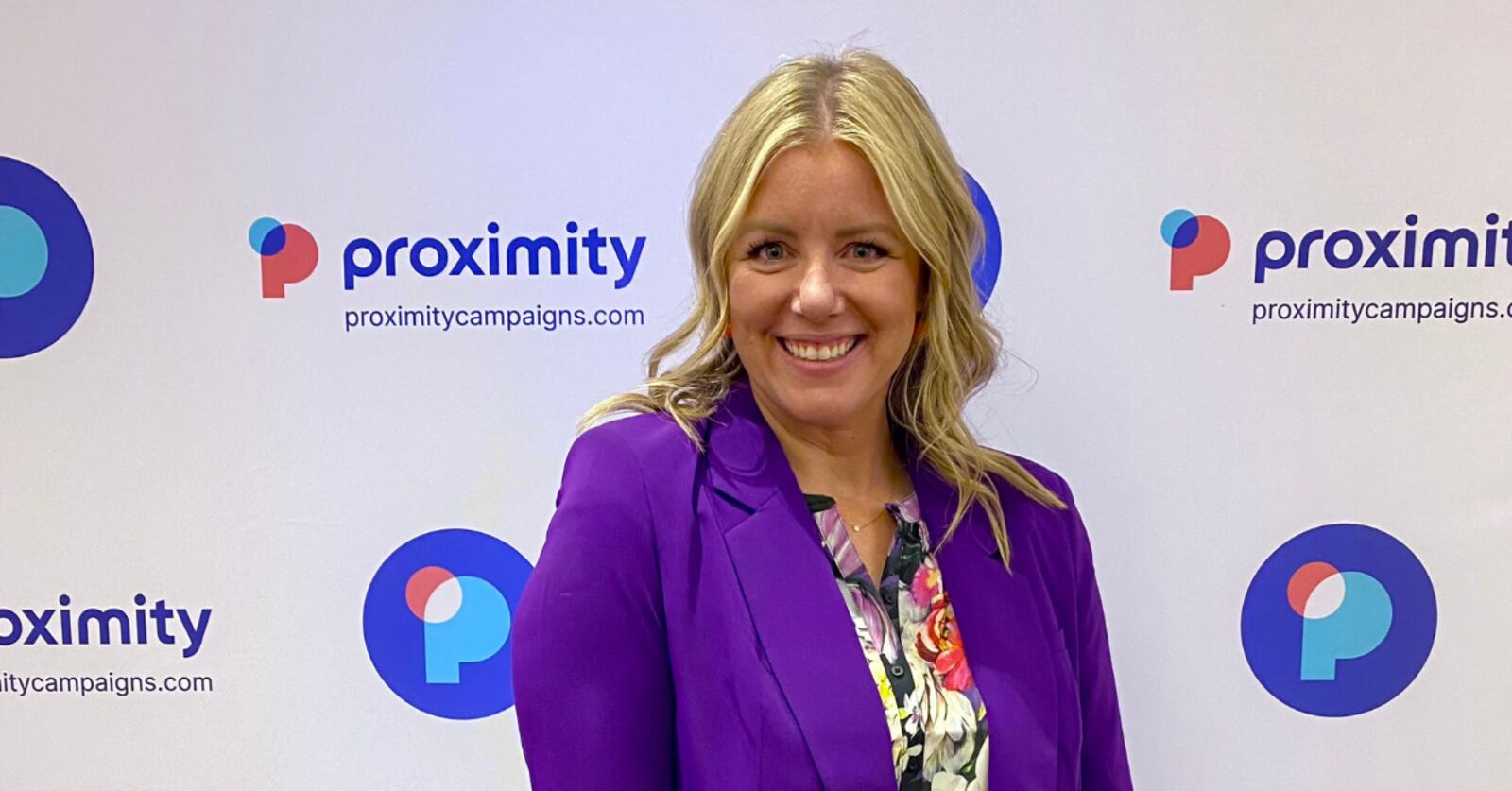
Earlier this month, I jumped off a cliff. A literal cliff. Paragliding is something I’ve always wanted to do, and I turn 40 this year. Imagine your feet lifting off the edge as you begin soaring through the air! Imagine the wind racing past your face, biting at your eyes, causing you to squint and blink through terror-filled joy!
Imagine the G-force of catching a pocket of warm air that bends and circles the parachute upward to climb higher until you’re hundreds of feet over the mountaintop, peering down at the specks below—it was a rush. I was thrilled to finally have this experience, but jumping off that cliff surprised me in ways I didn’t anticipate. Even during the flight, I couldn’t help thinking about how the experience mirrored my journey as the founder and CEO of Proximity.
I am a doer. It’s part of who I’ve always been. I grew up hiking, biking, camping and participating in sports with my sister and six older brothers. As amazing as those brothers were, at the precocious age of eight, I created a neighborhood girls’ club complete with handprint signatures on our butcher-paper mission and charter. As the captain of sports teams, a collegiate presidential scholar, joining a community theater production and learning to tap dance on a moving stage—I get things done.
I eventually became involved in the political arena, and after receiving my master of public administration (MPA) degree from the University of Utah, I ran for city council in 2015. And guess what? I did not get it done. I lost by 11 votes. I did my best. I organized the heck out of my Google Sheets, paper maps and neighborhood volunteers. But when that election day finally came and I lost my race, I had a realization…
Political campaigns are much like startups
Running a campaign is like running a startup: create something from nothing as fast as you can. You must be agile and ready to pivot when necessary. But as a 2015 city council candidate, I felt hamstrung. I didn’t have the tools or support necessary to run a great campaign or be responsive in the way I had hoped. Those paper maps just didn’t cut it, and I knew something had to change.
I started working more on political campaigns as a fundraiser, finance director, political consultant or campaign manager on campaigns both successful and unsuccessful. I saw what it takes for people to win and where campaigns fall short. I started noticing that the same pain points that existed for me on my city council campaign also existed for other candidates in races large and small.
Candidates don’t have time and money to waste on old tools that don’t serve them or tools that maintain the status quo. You don’t drive the racetrack in a Pinto when you need a Porsche, and you don’t drive campaign strategy using 30-year-old software to meet the needs of today. I realized campaigns were ready for a technological revolution. Now, if you were going to run for political office, would you know what to do or where to start? If you had a group of people who wanted to support you, would you know how to get donations from them, what you needed to do to report those donations, and how to follow up with the donors? What if you just wanted to know who in your city were active voters? Would you know how to obtain a voter file and the best way to reach these voters?

Knowing and understanding the campaign process is difficult for many people. The barrier to entry into political leadership is so high that people don’t think they can do it. And those who do “throw their hat in the ring” desperately need tools and support to navigate the process effectively. Good leaders just want to be great candidates.
But with so many limitations, existing software doesn’t solve problems for candidates; it creates problems for candidates. Instead of a modern dashboard with a great user experience, you’ve got cumbersome tools and archaic offerings. Instead of an all-in-one political campaign platform, existing software provides fragmented solutions siloed to specific tasks. Candidates don’t know what’s happening in their campaign when they should be able to visually and instantly see their campaign health and guide strategy.
That’s when I started thinking, what if I built it? What if good leaders had what they needed to run a great campaign? What if we removed barriers to entry and democracy became truly representative of people like you and me?
Proximity: Taking the leap
It was about at this time that I figuratively strapped on the paragliding harness. In the fall of 2022, I gathered market data and saw a huge opportunity to disrupt a market ripe for innovation, just like I had weighed the pros and cons of paragliding and saw huge happiness potential.
Let me tell you something you’re going to want to know: There are over half a million elected offices in the United States today. On average, depending on the race level, anywhere from 2.5 to 10 candidates run for each open seat, making campaigns a $10 billion cottage industry.
Let me tell you something else you’re going to want to know: Draper, Utah, is home to world-class paragliding. The geography at the point of the mountain—with steady air streams coming directly from the Great Salt Lake—as well as the narrowing of the valley floor toward Draper create conditions perfect for soaring.
So, I decided to jump. I listened to safety instructions, signed my life away on a standard waiver form, checked and double-checked the harness safeguards, tried to assess the tandem pilot’s true capabilities, and then jumped off that cliff. Well, it was more like running off the cliff, but when the air caught our parachute and I couldn’t feel the ground under my feet, I screamed in delight!
The tension it takes to accelerate
I may not have screamed in delight when I actually took the big leap of starting my company in October 2022, submitting my Delaware entity filings and writing my business plan. Just like I felt the tension of deciding whether to bring development talent in-house or outsource my code, I felt tension in the air when we caught our first thermal, and our parachute began to rise. Tension is needed to both accelerate a parachute and accelerate startup decision-making.
One of my superpowers is recognizing the strengths of others, building a team to maximize those strengths, and then getting out of the way to let them do their thing. I chose to bootstrap Proximity and not seek outside funding from the start. because their leadership team respected my subject matter expertise and had a great eye for the complete customer experience.

I was deliberate and intentional in keeping a lean team and focusing first on the product. I wanted to bring Proximity to market so I could test and iterate as quickly as possible, but at times, that decision felt tense. I felt tension a lot during my early days—and I still do—but I lean on the strength and wisdom of great mentors, advisers and friends to challenge my framework and guide me to trust myself.
As I sat in what can only be described as an adult-sized Baby Bjorn in front of my tandem pilot, I saw him as the adviser and friend I needed to guide me to relax and trust the gliding process. And then, it got hard. Things didn’t go the way I expected.
Looking to the distance
The wind whipped through my hair and stung my eyes, causing them to water incessantly. It was difficult to see. I tried to close them in long blinks—squeezing out the extra liquid and shutting them to avoid further torrential tears—but that began messing with my equilibrium and the balance between what I was seeing and what I was doing.
I started feeling queasy and worried if my pilot would start the acrobatics I so enthusiastically encouraged just minutes ago when my feet were firmly planted on the ground. He must have sensed my unease and asked how I was doing. When I shared my concerns, he reminded me, “Keep your head up and look to the distance.”
Now, if you can’t make a metaphor out of that, are you even a founder? Keep your head up and look to the distance. When I sit through development calls and find myself in the weeds, I think about the overall customer experience and user journey so I can keep my head up and look at the distance.
When I assess my go-to-market strategy, prioritize customer segmentation channels and form a plan to optimize for low customer acquisition cost, I’m keeping my head up and looking to the distance. When I structure my raise and consider how outside investment will trigger a new market launch and candidate user doubling, I’m keeping my head up and looking to the distance. When I consider the financial forecast of my company, diversify my revenue stream and invite investors to join me, I’m preparing for a strong exit, keeping my head up and looking to the distance.
I opened my eyes and saw north all the way to Ogden. Our parachute angled, and I looked south to see Spanish Fork. I caught the vision and the beauty of the experience and really started enjoying the ride. As I lifted my head, the wind didn’t hit my eyes as directly. As I looked to the distance, my stomach became steadier.
Every LinkedIn influencer will say that being a founder means failing fast, staying hungry and facing challenges with an indomitable spirit. And yes, that’s true. You must find the drive that delivers you from the undoubtedly difficult days. But what’s equally important is that you must keep your head up and look to the distance. Keep that vision. Share that vision. No company will succeed without a visionary, and no investor will back a founder who can’t dream big.
Creating a positive political difference
I built Proximity to bring politics back to the people. Launched June 1, 2023, Proximity is already getting it done. We’ve supported municipal candidate users to know how to find active voters and reach them. We’ve helped them simplify the donation process, accurately receive and report those donations, and know how to follow up with donors.
Not 24 hours after releasing our beta, a candidate came to us to help gather signatures to qualify on the ballot of Utah’s special congressional election. Using Proximity, they mobilized 350 amazing volunteers to gather 9,000 signatures in just four weeks, saving upwards of the $180,000 they would have paid a signature-gathering firm.
Proximity’s mission is to empower good leaders to become great candidates and get them on the ballot when they need it! We provide comprehensive, user-friendly political campaign management software that enables leaders to effectively plan, execute and analyze their campaigns. As a public benefit corporation, we believe in helping leaders make a difference by providing tools and resources to improve election literacy, enhance political campaign innovation and foster equitable access and pathways to civic leadership.
Proximity is just getting started, but we are ready for this technological revolution. We are ready to create a positive political difference by bringing more voices to the table—and we are ready to do it all in a market ripe for innovation.
I’m proud to be the founder and CEO of such a phenomenal vertical SaaS product. Proximity professionalizes and revolutionizes the way campaigns are run and won. I’m proud to realize my path to growth—my thermal rise—includes tension and difficulty to help me figure things out, get things done and keep my head up, looking to the distance. I will forever be proud to have taken the leap.

